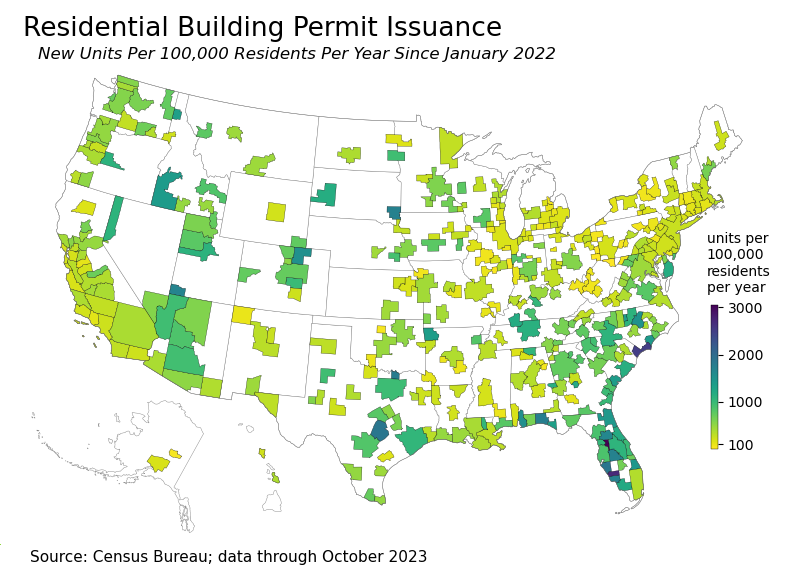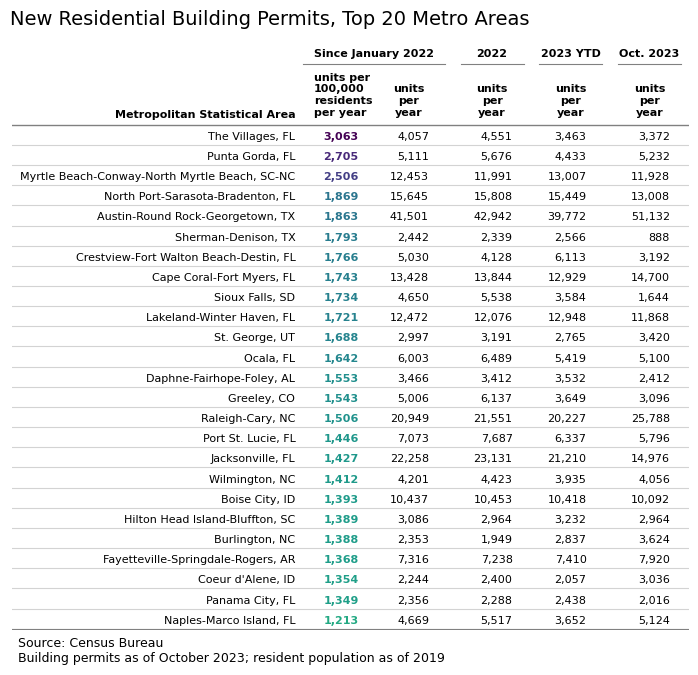Housing affordability is a major issue in the US, and has spread into smaller metro areas. While demand for housing has sent prices well above their pre-pandemic levels in most areas, supply has been disproportionately added in the southern region. Of the 1.6 million people added to the US from July 2022 to July 2023, 1.4 million were in the south.
As one result of these changes, California and states in the northeast region will continue to lose congressional seats and states in the south will add them. In response to estimates of changing congressional apportionment, some have pointed out that the south is disproportionately building the new housing, so it only follows that the south will have the population growth. The causality is perhaps unclear, but this seems like a reasonable interpretation.
Each month the Census Bureau reports building permits issued in major metro areas. Using these reports, I’ve divided new housing units permitted in each metro area each year by the existing resident population. The goal is to identify the areas that are likely to build a lot of new housing relative to the current population. The results are mapped below.

I should point out that not all building permits that are issued result in housing being constructed, but the map gives a decent idea of where growth is likely to be highest over the coming year.
The top 25 metro areas by units issued per resident per year are shown in the following table. The highest rate of issuance for residential building permits is in the smaller- and mid-sized metro areas of central and southwest Florida. Among large metro areas, the fastest growth is in Austin, Texas. The Myrtle Beach area on the North Carolina and South Carolina border is also primed for growth.

